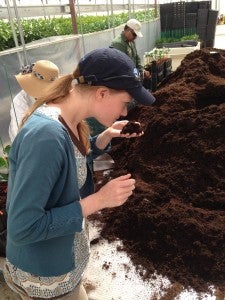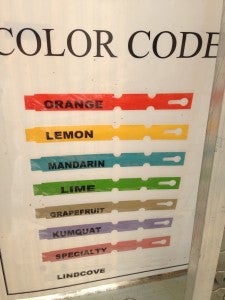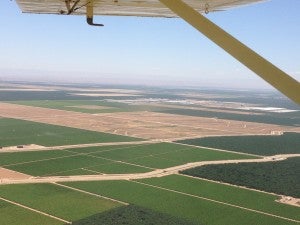Putting yourself in the boots of a California farmer will give you a whole new perspective.
That’s why I recently spent a few days alongside Matt Fisher, a citrus grower in Kern County, California – to better understand growers’ challenges and concerns, and to rethink how environmental groups and farmers can achieve shared goals.
The experience was part of a farm exchange program offered through the California Agricultural Leadership Foundation, which facilitates learning opportunities on California farms.
With a record-breaking drought in California, tensions between environmentalists and farmers run high, and finger pointing is everywhere. But that isn’t getting us anywhere. The time I spent on Matt’s farm gave me new inspiration to break down barriers, put aside stereotypes, and work together.
“Cope, adapt and innovate”
Everyone is affected by drought. Just as my household in Oakland is required to cut back on water use, farmers have had to cut back, too. I can take shorter showers or install a low-flow toilet – but it won’t affect my livelihood.
Matt is in a different boat, as he and other farmers are under pressure to keep producing the same yields with less water.
“I can’t make it rain, that’s just life, so I need to cope, adapt and innovate,” he told me.
So Matt’s working to optimize his water use. He’s closely tracking every drop of water and knows just the right amount that’s needed to produce juicy California oranges. He’s doing his best to ensure that no more water is used than is needed.
Matt’s water efficiency improvements benefit us all – not just by saving money but also by helping to relieve water stress.
Finding common ground to achieve shared goals
Another takeaway from my time with Matt was that it’s important to listen to growers, who know their lands better than anyone, to ensure that solutions for natural resources are feasible for the farmer. Weather, soils, and political realities all influence how theoretical practices get applied to the land. And farmers like Matt have their ear to the ground at all times.
Farmers need to keep their land productive and environmentalists want more conservation. But there are ways that we can work together to keep agricultural lands productive while achieving more conservation.
For example, improvements in soil health have proven to increase resilience in times of drought. Growers are seeing improved water retention, better plant nutrition and potentially better production outcomes, which can mean more profit. And nature benefits from less erosion and less inputs needed to achieve the same yields.
There are also a number of market mechanisms that reward farmers for environmental stewardship. One new program, the rice protocol, just came online last week. And next up is a fertilizer protocol that will reward farmers for optimizing fertilizer use, reducing costs as well as air and water pollution.
There’s no question that Matt and I both want the best for the future of California agriculture. While some of our opinions may differ, our vision is the same.
The more that we can all sit down together – preferably over a plate full of California-grown food – and share our stories, the more effective we can be.












